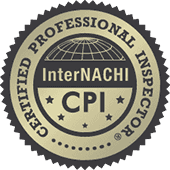Advantage of Pre-Listing Home Inspections: A Win-Win-Win Scenario
In my previous post, I highlighted the missed opportunity for sellers who neglect professional pre-listing inspections. Imagine a scenario where the seller purchases an inspection, addresses necessary improvements, and then lists their home. This approach benefits not only the seller but also the realtor, buyer, and other stakeholders, including inspectors, tradespeople, and mortgage brokers.
A standard pre-listing home inspection is an inspection that sellers often use to find out the true condition of their home prior to a buyer’s inspector looking at it. The purpose of the inspection is to identify any major defects in the systems of the home that may cause extensive negotiations or even sink the deal. This will give the seller time to evaluate the issues and either correct them or price the home accordingly.
Here are some of the advantages to a pre-listing home inspection for the seller(s).
- They can choose and assist the inspector of their choice at their convenience, something normally not done with a buyer’s inspection. This gives the seller the opportunity to disclose previous issues in the home with the inspector and help them see their home through the eyes of a critical, unbiased third party, thereby making them more realistic about the selling price.
- It may alert the seller to areas of immediate concern such as apparent mould, infestations or safety items before agents and visitors tour the home.
- A sellers inspection reveals problems ahead of time which:
- Gives the seller time to shop for competitively priced contractors and make the required repairs.
- Permits the seller to attach estimates or paid invoices to the inspection report.
- Makes the home show better after the problems are addressed.
- Removes over inflated buyer procured estimates from the negotiation table.
- An inspection report provides an unbiased, third party, professional opinion to offer to potential buyers.
- The inspection report can also help the seller substantiate a higher asking price if problems don't exist or have been corrected.
- The report may encourage the buyer to waive the inspection contingency, so the deal is less likely to fall apart the way they often do when a buyer's inspection reveals unexpected problems at the last minute.
- Gives the inspector, if required, time to perform ancillary inspections such as radon testing, mould testing and more.
In summary, pre-listing inspections benefit everyone involved. Sellers gain peace of mind, realtors showcase well-prepared homes, and buyers receive transparent information. It’s a win-win-win situation that sets the stage for successful real estate transactions.
